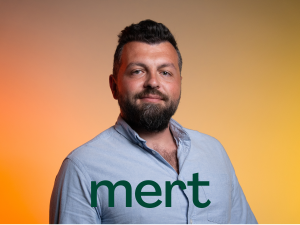‟ When I was a child, we didn’t even have internet at home; today I’m working on technology that lets you connect through light. That still feels a bit like magic to me. ”
Meet Mert Bayraktar: growing up in Turkey before the internet era, Mert was captivated by what seemed like magic: instant communication across distances. Today, as an SnT researcher at the University of Luxembourg, he’s turning that childhood wonder into reality, developing innovative ways to connect our world using light itself. From beaming data between buildings to enabling internet through indoor lighting and even underwater, Mert’s work is driven by one question: how can we make the world better connected?
Relive the conversation – transcript below!
Can you tell us a bit about yourself and your background?
I joined SnT two years ago and have been in Luxembourg since then. I hold a bachelor’s degree in electronic and communication engineering, a double major in computer engineering, and both my master’s and Ph.D. in electronic and communication engineering from Çankaya University in Turkey.
What first inspired your interest in technology and communication systems?
When I was a child, we didn’t even yet have internet at home; today I’m working on technology that lets you connect through light. That still feels a bit like magic to me. My uncle still calls me whenever something in his house breaks, saying, “You’re an engineer, fix it!” I’m not a technical expert on this topic. However, those moments remind me why I chose this field: to solve problems that make life a little easier.
What is the main focus of your current research at SnT?
I work on optical wireless communication, which uses light instead of radio waves to transmit data. This includes laser communication between buildings, satellites, or even underwater vehicles. A key part of my work is making these systems more robust against atmospheric turbulence. In the future, we might even connect to the internet through LiFi, using light bulbs instead of Wi-Fi routers. It’s a field that truly feels like science fiction becoming reality.
‟ We already focus on technical skills like maths, physics, and programming, but we often overlook emotional intelligence and communication. In research, managing stress and building good personal relationships are just as important. ”
What motivates you most about your research?
My motivation began in 2015, when I joined an entrepreneurship programme in the United States. The question everyone there asked was, “How can we make the world a better place?” Since then, my goal has been to improve life quality through safer, faster, and more sustainable communication technologies. Optical systems don’t emit harmful radio frequencies, so they’re not just efficient, they’re healthier, too.
What are some challenges you’ve faced during your research journey?
At first, understanding the full communication system was a challenge. That’s why I pursued a double major to bridge electronics and computer science. Later, securing research funding became another challenge, and I learned the value of interdisciplinary teamwork. Collaborating with colleagues from different departments, and even different countries, taught me that solving complex problems always requires diverse perspectives.
How has your experience at SnT and in Luxembourg shaped your work?
From day one, I felt warmly welcomed. SnT’s interdisciplinary environment was exactly what I had imagined: diverse, dynamic, and inspiring. In Turkey, research circles were more uniform. Here, I work with people from across the world – Asia, Europe, and the U.S.- and that mix of technical and cultural diversity makes our research stronger.
How do you see the role of diversity and gender balance in tech research?
Gender diversity, for example, often brings different problem-solving approaches; sometimes more pragmatic, sometimes more creative. Cultural diversity introduces new ways of thinking about the same problem. And research diversity, through interdisciplinary collaboration, helps us see the bigger picture. Innovation happens when these perspectives meet.
‟ Diverse perspectives make better science. ”
What do you think technology research needs more of in the future?
We already focus on technical skills like maths, physics, and programming, but we often overlook emotional intelligence and communication. In research, managing stress and building good personal relationships are just as important. If you can coordinate well with your team and stay resilient, you not only finish projects on time; you enjoy the process. And it will increase your performance as well.
